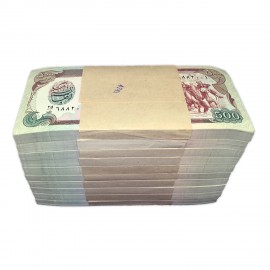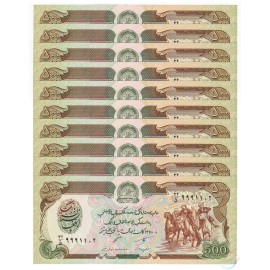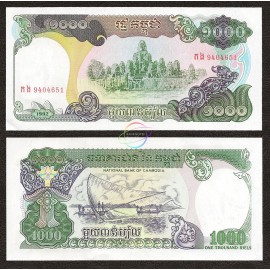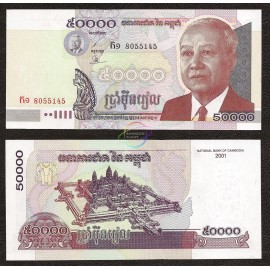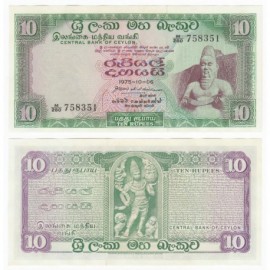Product successfully added to your shopping cart
There are 0 items in your cart. There is 1 item in your cart.
Asia & Middle East
- Africa
- Angola
- Biafra
- Burundi
- Central African States
- Comoros
- Congo Democratic Republic
- Eritrea
- French West Africa
- Gambia
- Ghana
- Guinea
- Guinea-Bissau
- Kenya
- Lesotho
- Liberia
- Libya
- Madagascar
- Malawi
- Mauritius
- Mozambique
- Nigeria
- Rhodesia
- Rwanda
- Seychelles
- Sierra Leone
- Somalia
- South Africa
- South Sudan
- Saint Thomas & Prince
- Swaziland
- Tanzania
- Tunisia
- Uganda
- West African States
- Zaire
- Zambia
- Zimbabwe
- Asia & Middle East
- Afghanistan
- Bahrain
- Bangladesh
- Brunei
- Burma
- Cambodia
- Ceylon
- China
- Egypt
- French Indo-China
- Hong Kong
- India
- Indonesia
- Iraq
- Japan
- Jordan
- Kazakhstan
- Korea
- Kyrgyzstan
- Laos
- Lebanon
- Malaya
- Malaysia
- Mongolia
- Myanmar
- Nepal
- Oman
- Pakistan
- Philippines
- Singapore
- South Vietnam
- Sri Lanka
- Tajikistan
- Thailand
- Turkmenistan
- Uzbekistan
- Vietnam
- Yemen
- Australia & Oceania
- Europe
- South & Central America
- Sets
- Special
- Wholesale
- Pre-1961
- Other
Filter
Asia & Middle East
Afghanistan
Afghanistan is a landlocked country located in South-central Asia. It has an area of 652,864 sq. km (251,827 sq. mi.) and has a population of about 32 million people.
Bahrain
Bahrain is a small Arab monarchy in the Persian Gulf. It is an island country consisting of a small archipelago centered around Bahrain Island, situated between the Qatar peninsula and the north eastern coast of Saudi Arabia, to which it is connected by the 25 km (16 mi) King Fahd Causeway. Bahrain's population is 1,234,567 (c. 2010), including 666,172 non-nationals. It is 780 sq. km in size, making it the third smallest nation in Asia after the Maldives and Singapore.
Bangladesh
Bangladesh is a country in South Asia. It shares land borders with India and Myanmar (Burma). Nepal, Bhutan and China are located near Bangladesh but do not share a border with it. The country's maritime territory in the Bay of Bengal is roughly equal to the size of its land area. Bangladesh is the world's eighth most populous country. Dhaka is its capital and largest city.
Brunei
Brunei is a sovereign state located on the north coast of the island of Borneo in Southeast Asia. Apart from its coastline with the South China Sea, the country is completely surrounded by the state of Sarawak, Malaysia. Brunei gained its independence from the United Kingdom on 1 January 1984.
Burma
Myanmar, also known as Burma, is a sovereign state in South East Asia bordered by Bangladesh, India, China, Laos and Thailand. About one third of Myanmar's total perimeter of 5,876 km (3,651 miles), forms an uninterrupted coastline of 1,930 km (1,200 miles) along the Bay of Bengal and the Andaman Sea. The country's 2014 census revealed a much lower population than expected, with 51 million people recorded. Myanmar is 676,578 square kilometres (261,227 sq mi) in size. Its capital city is Naypyidaw and its largest city and former capital city is Yangon.
Cambodia
Cambodia, officially known as the Kingdom of Cambodia, is a country located in the southern portion of the Indochina Peninsula in Southeast Asia. It is 181,035 square kilometres (69,898 square miles) in area, bordered by Thailand to the northwest, Laos to the northeast, Vietnam to the east, and the Gulf of Thailand to the southwest. Cambodia has a population of over 15 million.
Ceylon
Between 1948 and 1972, Ceylon was an independent country in the Commonwealth of Nations that shared a monarch with Australia, Canada, New Zealand and the United Kingdom, and certain other sovereign states. In 1948, the British Colony of Ceylon was granted independence as Ceylon. In 1972, the country became a republic within the Commonwealth, and its name was changed to Sri Lanka. It was an island country in South Asia, located about 31 km (19.3 mi) off the southern coast of India.
China
The People's Republic of China is a country located in East Asia. It has an area of 9,596,961 sq. km (3,705,407 sq. mi.) and has a population of about 1.35 billion people, which makes it the world's most populous country.
Egypt
Egypt is a Mediterranean country bordered by the Gaza Strip and Israel to the northeast, the Gulf of Aqaba to the east, the Red Sea to the east and south, Sudan to the south, and Libya to the west. With over 92 million inhabitants, Egypt is the most populous country in North Africa and the Arab world, the third-most populous in Africa (after Nigeria and Ethiopia), and the fifteenth-most populous in the world.
French Indo-China
French Indo-China consists of the three states of Vietnam, Laos, and Cambodia which were formerly associated with France. The term Indochina refers to the mix of Indian and Chinese culture in the region.
Hong Kong
Hong Kong, special administrative region of China, is located on the South coast of China. Hong Kong has an area of 1,104 sq. km (426 sq. mi.) and has a population of about 7.2 million people.
India
India is a country in South Asia. It has an area of 3,287,590 sq. km (1,269,346 sq. mi.) and has a population of about 1.2 billion people, which makes it the world's second most populous country, after China.
Indonesia
Indonesia is an archipelago comprising thousands of islands that lie across the Equator. It has an area of 1,904,569 sq. km (735,358 sq. mi.) and has a population of about 255 million people, which makes it the world's fourth-most populous country.
Iraq
Iraq is a country in the Middle East, bordered by countries including Iran, Turkey, and Syria. It has a rich cultural history as the site of ancient Mesopotamia, one of the world’s earliest civilizations. Iraq covers a land area of approximately 437,072 square kilometers (168,754 square miles) and has a population of around 44 million people as of 2024. The capital city is Baghdad, which has long been a center of learning and culture in the Arab world.
Japan
Japan is a sovereign island country in East Asia. Located in the Pacific Ocean, it lies off the eastern coast of the Asian mainland and stretches from the Sea of Okhotsk in the north to the East China Sea and China in the southwest. The population of 127 million is the world's tenth largest.
Jordan
Jordan is a Middle Eastern country in Western Asia, covering approximately 89,342 square kilometers with a population of around 11 million. Known for its ancient history, stunning desert landscapes, and iconic sites like Petra and the Dead Sea, Jordan is a top destination for cultural tourism and archaeological exploration.
Kazakhstan
Kazakhstan is the largest landlocked country in the world, located in Central Asia, covering about 2,724,900 square kilometers with a population of approximately 19 million. Known for its vast steppes, rich natural resources, modern cities like Almaty and Astana, and a unique blend of cultures, Kazakhstan is a growing destination for eco-tourism, adventure travel, and cultural exploration.
Korea
Kyrgyzstan
Kyrgyzstan is a mountainous country in Central Asia, covering approximately 199,951 square kilometers with a population of around 7 million. Renowned for its dramatic alpine landscapes, nomadic traditions, and the breathtaking beauty of Lake Issyk-Kul, Kyrgyzstan offers unforgettable experiences for nature lovers, trekkers, and cultural explorers alike.
Laos
Laos is a landlocked country in Southeast Asia, covering about 236,800 square kilometers with a population of approximately 7.5 million. Known for its lush mountains, ancient temples, and the serene Mekong River, Laos offers a peaceful retreat rich in Buddhist culture, natural beauty, and authentic rural experiences.
Lebanon
Lebanon is a small but historically rich country in the Middle East, covering approximately 10,452 square kilometers with a population of around 5.5 million. Known for its Mediterranean coastline, ancient ruins, vibrant cities like Beirut, and diverse cultural heritage, Lebanon offers a unique blend of history, cuisine, and natural beauty.
Malaya
Malaya, the historical region that now forms part of modern-day Malaysia, covered approximately 132,000 square kilometers and had a population of around 6 million prior to independence in 1957. Known for its rich colonial history, tropical landscapes, and key role in the global tin and rubber trade, Malaya holds a significant place in Southeast Asian history, especially among collectors of British colonial-era banknotes and memorabilia.
Malaysia
Malaysia is a diverse Southeast Asian nation spanning about 330,803 square kilometers with a population of approximately 33 million. Known for its modern cities, tropical rainforests, stunning beaches, and vibrant cultural mix of Malay, Chinese, and Indian influences, Malaysia is a top destination for food lovers, nature enthusiasts, and cultural explorers.
Mongolia
Mongolia is a vast, landlocked country in East and Central Asia, covering approximately 1,564,116 square kilometers with a population of around 3.4 million. Known for its expansive steppes, nomadic heritage, and dramatic landscapes including the Gobi Desert and Altai Mountains, Mongolia offers a unique destination for adventure seekers, cultural explorers, and history enthusiasts.
Myanmar
Myanmar, located in Southeast Asia, covers a land area of approximately 676,578 square kilometers, making it the 40th largest country in the world. As of the most recent estimates, it has a population of around 55 million people. The country is known for its diverse ethnic groups, rich cultural heritage, and significant historical landmarks, including ancient temples and vibrant traditions. Myanmar's geographical features include mountains, rivers, and coastal regions, contributing to its natural beauty.
Nepal
Nepal, a landlocked country in South Asia, spans an area of about 147,516 square kilometers. It is home to a population of approximately 30 million people. Nepal is renowned for its stunning mountainous landscape, including eight of the world's highest peaks, such as Mount Everest. The country's diverse geography ranges from the flat plains of the Terai region to the rugged terrain of the Himalayas. Nepal has a rich cultural heritage, with a mix of Hindu and Buddhist traditions, and is famous for its historical temples, festivals, and vibrant local communities.
Oman
Oman, located on the southeastern coast of the Arabian Peninsula, has a land area of approximately 309,500 square kilometers. The country is home to around 5.5 million people. Oman is known for its diverse landscapes, ranging from vast deserts and rugged mountains to beautiful coastlines along the Arabian Sea and the Gulf of Oman. It has a rich history influenced by maritime trade, and its culture blends Arab, Persian, African, and Indian influences. Oman is also known for its commitment to preserving traditional customs, such as in architecture, music, and cuisine, while also embracing modern development.
Pakistan
Pakistan, located in South Asia, has a land area of approximately 881,913 square kilometers, making it the 33rd largest country in the world. With a population of around 240 million people, it is the fifth most populous country globally. Pakistan shares borders with India, China, Afghanistan, and Iran, and it also has a coastline along the Arabian Sea. The country features diverse landscapes, from the towering peaks of the Himalayas and the Karakoram Range to vast deserts and fertile plains. Pakistan has a rich cultural heritage, with influences from various civilizations, including Mughal, Persian, and Central Asian. Its history, traditions, and cuisine reflect this blend of cultures.
Philippines
The Philippines is an archipelago in Southeast Asia, made up of over 7,000 islands. It has a land area of about 300,000 square kilometers and a population of around 113 million people. The capital is Manila, while Quezon City is the largest city. Known for its tropical beaches, vibrant culture, and rich history, the Philippines blends Asian, Spanish, and American influences.
Singapore
Singapore is a small island city-state located in Southeast Asia, at the southern tip of the Malay Peninsula. Despite its compact size, with a land area of only about 728 square kilometers, it has a population of around 6 million people. Singapore is known for its highly developed economy, efficient infrastructure, and status as a global financial hub. The country is also famous for its cleanliness, strict laws, and multicultural society, with major ethnic groups including Chinese, Malay, Indian, and Eurasian communities. Though small in size, Singapore plays a significant role on the international stage in trade, technology, and diplomacy.
South Vietnam
South Vietnam, officially known as the Republic of Vietnam, existed from 1955 to 1975 during the Cold War era. It occupied the southern part of present-day Vietnam, with a land area of roughly 173,809 square kilometers. Its population during the early 1970s was around 19 to 20 million people. The capital city was Saigon (now Ho Chi Minh City). South Vietnam was a non-communist state supported mainly by the United States and its allies, opposing the communist North Vietnam. The Vietnam War, a major conflict involving both domestic and international forces, ultimately led to the fall of Saigon in 1975, marking the end of South Vietnam and the reunification of the country under communist rule.
Sri Lanka
Sri Lanka is an island nation located in the Indian Ocean, just southeast of India. It covers a land area of about 65,610 square kilometers and has a population of approximately 22 million people. Known for its rich cultural heritage, ancient temples, and stunning natural beauty, Sri Lanka features diverse landscapes ranging from tropical beaches and lush rainforests to mountainous highlands and tea plantations. The country has a long history influenced by Buddhism, colonial rule, and vibrant local traditions. Colombo is the commercial capital, while Sri Jayawardenepura Kotte serves as the official administrative capital.
Tajikistan
Tajikistan is a landlocked country located in Central Asia, covering a land area of about 143,100 square kilometers. It has a population of approximately 10 million people. The country is known for its dramatic mountainous terrain, with over 90% of its landscape covered by mountains, including parts of the Pamir and Alay ranges. Dushanbe is the capital and largest city. Tajikistan has a rich cultural history influenced by Persian, Russian, and Central Asian traditions, and Tajik, a variety of Persian, is the official language. The economy is largely supported by agriculture, remittances, and hydropower, with water resources playing a key role due to its many rivers and lakes.
Thailand
Thailand, located in Southeast Asia, covers a land area of approximately 513,120 square kilometers and has a population of around 70 million people. Known for its rich culture, vibrant cities, and tropical landscapes, Thailand is a popular travel destination famous for its cuisine, ancient temples, and beautiful beaches. The capital city, Bangkok, is a bustling hub of commerce, culture, and street life. Thailand’s geography includes forested mountains in the north, fertile rice fields in the central plains, and picturesque islands in the south. With a deep-rooted history influenced by Buddhism and monarchy, Thailand maintains a unique blend of tradition and modernity.
Turkmenistan
Turkmenistan is a country in Central Asia, covering a land area of about 491,210 square kilometers. It has a population of roughly 6.5 million people. Much of the country is dominated by the vast Karakum Desert, making it one of the most sparsely populated nations in the region. The capital city is Ashgabat, known for its distinctive white marble architecture and grand monuments. Turkmenistan has rich natural gas reserves, which play a major role in its economy. The country has a deep history connected to the Silk Road and features a unique cultural blend of Turkic and Persian influences.
Uzbekistan
Uzbekistan, located in Central Asia, covers a land area of approximately 448,978 square kilometers and has a population of around 36 million people. Its banknote designs reflect the country’s deep historical roots and cultural richness, often featuring prominent figures like Amir Timur and iconic sites such as the Registan in Samarkand. Traditional Uzbek patterns, architectural motifs, and Silk Road symbolism are woven into the artwork, highlighting the nation's heritage. Modern banknotes also incorporate advanced security features and sleek designs that balance national pride with a forward-looking vision, representing Uzbekistan’s growing presence on the global stage.
Vietnam
Vietnam, located in Southeast Asia, has a land area of about 331,210 square kilometers and a population of approximately 100 million people. The country’s banknote designs are deeply rooted in its rich cultural, historical, and revolutionary heritage. Vietnamese banknotes often feature portraits of national heroes, such as President Ho Chi Minh, and landmarks like the iconic One Pillar Pagoda, the Temple of Literature, and Ha Long Bay. Traditional motifs, including lotus flowers and images reflecting the country's agricultural past, are also prominent. In recent years, Vietnam has modernized its currency with vibrant colors, advanced security features, and designs that celebrate both its rich history and economic growth.
Yemen
Yemen, located on the Arabian Peninsula, covers a land area of about 527,968 square kilometers and has a population of approximately 32 million people. The design of Yemeni banknotes reflects the country's rich history, cultural diversity, and natural landmarks. The notes often feature portraits of historical figures, such as past rulers and leaders, as well as iconic architectural monuments like the old city of Sana'a, known for its ancient mud-brick buildings. Traditional patterns and symbols representing Yemen's heritage, such as khat plants and traditional clothing, are also depicted. In recent years, Yemen’s currency has incorporated modern security features, though the country’s ongoing conflict has affected the stability and circulation of its currency.
Afghanistan 500 Afghanis X 1000 PCS, Brick, 1991, P-60c, AU-UNC
Features a vibrant design that reflects the nation's cultural heritage. The front showcases a dynamic scene of men playing Buzkashi, a traditional equestrian sport, alongside the national emblem. The reverse depicts the historic Bala Hissar fortress in Kabul. Measuring approximately 150 x 66 mm, the note includes security features such as a watermark and security thread.
$499.99In Stock











































